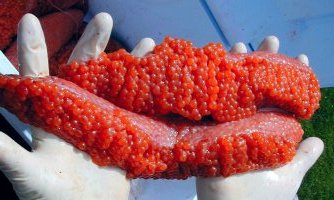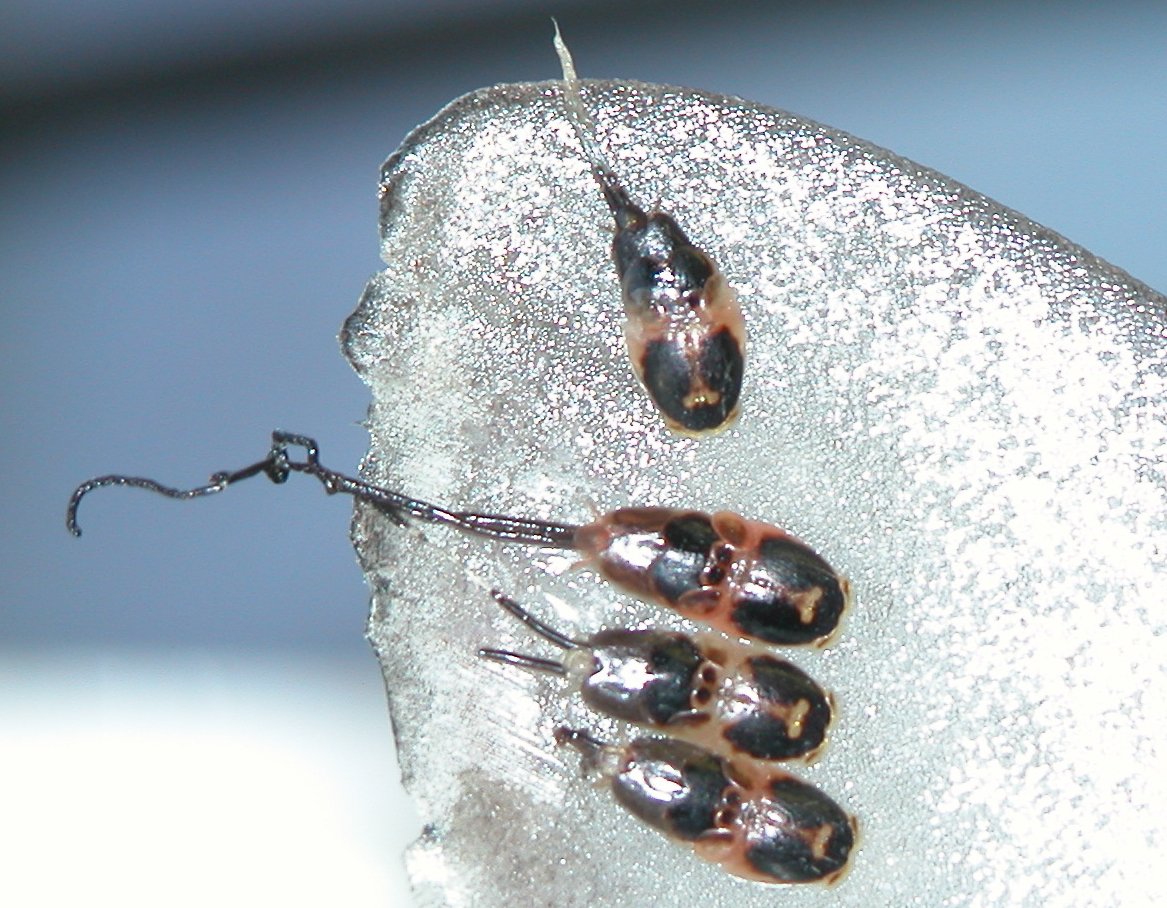Predator, Prey & Everything Else!
Atlantic Salmon have many interesting interactions with other organisms, but one of the most known interactions is their relationship with us! Right now you are learning about one of the most commonly eaten seafoods in the United States. Salmon in the key source of omega-3 fatty acids in American diets. Omega-3 fatty acids help reduce the incidence of cardiovascular disease which is becoming increasingly more common! Americans consume roughly 190,000 tons of Atlantic Salmon per year. I haven't seen any salmon eating people, so it looks like we get the better end of that deal!
Salmon eggs and fry have a recently researched mutualistic relationship with one of their main food sources, stonefly nymphs. The fry consume the stonefly nymphs and therefore, continue to live. Stonefly nymphs are scavengers that often consume dead salmon eggs.
Speaking of consuming salmon eggs...we eat those too! If you have ever had sushi, chances are, you may have eaten some salmon eggs.
Oh yeah, you eat those.
Salmon are great predators, but they are certainly not safe from larger predators. At younger stages of life, they are preyed upon by sharks, skates, larger cod and halibut. Once the salmon are larger, they are fairly safe from most sea creatures...except for seals! The salmon have to watch their backs...or tails...when they are in seal territory.
I decided to do a little research to find a parasitic organism that interacts with Atlantic Salmon. I came across an organism called a sea louse. It is a very small parasitic crustacean that attaches to the salmon and cause lesions. If sea lice infect a young salmon, they can kill it. Sea lice are normally only a problem in salmon farms, but many of the salmon farmers keep their salmon in open net cages which allows the sea lice to move into wild habitats.
If you still haven't had
enough, you should check out the
interesting facts!
Questions? Comments? Contact
me at
webb.laur@students.uwlax.edu
Site Designed by Lauren Webb - Last Updated: 4.15.09
University of
Wisconsin - La Crosse
For more interesting organisms visit
multiplerganisms.net
Back to
HOME

